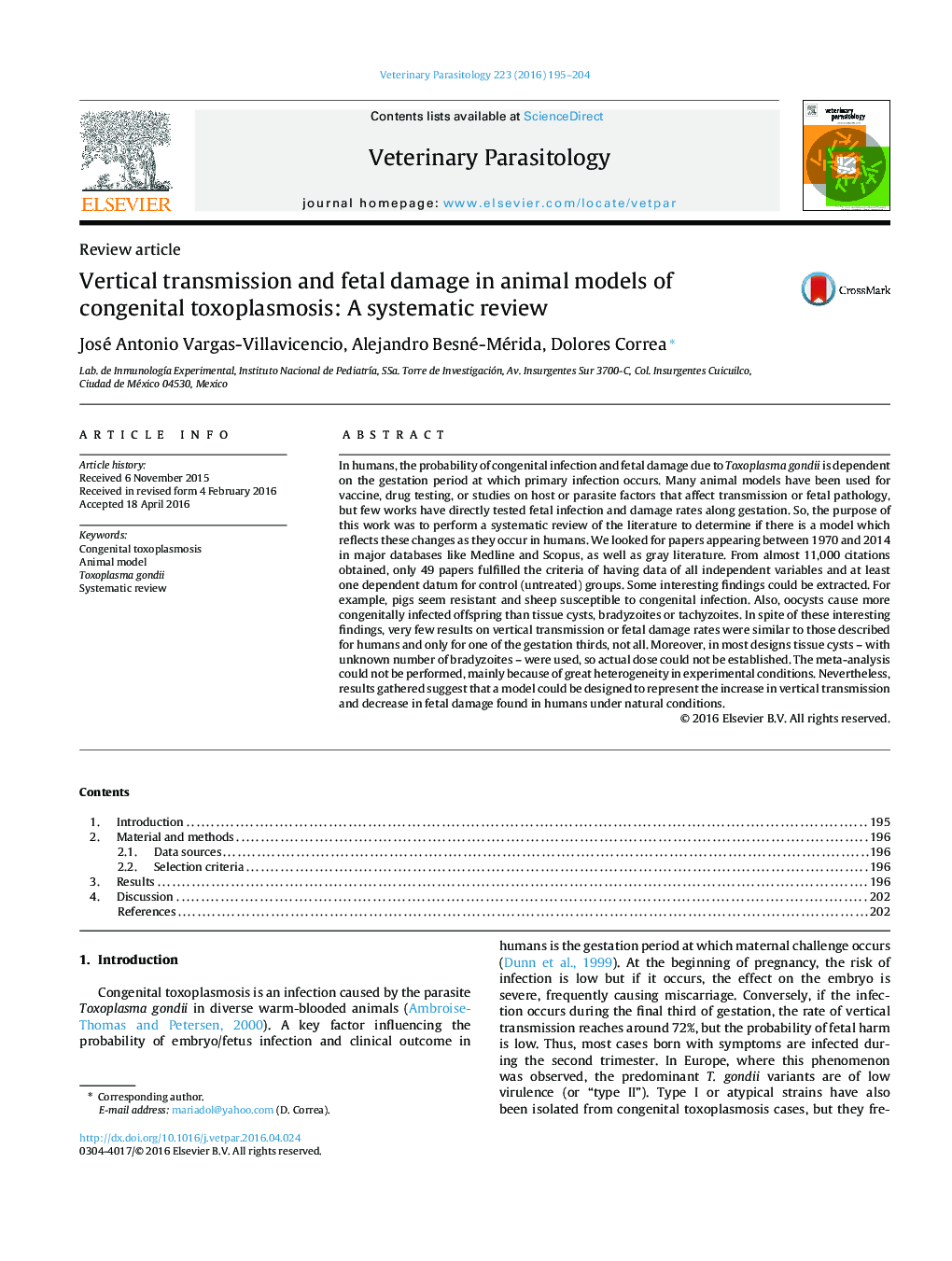| Article ID | Journal | Published Year | Pages | File Type |
|---|---|---|---|---|
| 2469775 | Veterinary Parasitology | 2016 | 10 Pages |
•The T. gondii strain influences fertility rate.•Most works used tissue cysts, so the doses ranged greatly.•The rates of infection or fetal damage in animal models were not similar to humans.
In humans, the probability of congenital infection and fetal damage due to Toxoplasma gondii is dependent on the gestation period at which primary infection occurs. Many animal models have been used for vaccine, drug testing, or studies on host or parasite factors that affect transmission or fetal pathology, but few works have directly tested fetal infection and damage rates along gestation. So, the purpose of this work was to perform a systematic review of the literature to determine if there is a model which reflects these changes as they occur in humans. We looked for papers appearing between 1970 and 2014 in major databases like Medline and Scopus, as well as gray literature. From almost 11,000 citations obtained, only 49 papers fulfilled the criteria of having data of all independent variables and at least one dependent datum for control (untreated) groups. Some interesting findings could be extracted. For example, pigs seem resistant and sheep susceptible to congenital infection. Also, oocysts cause more congenitally infected offspring than tissue cysts, bradyzoites or tachyzoites. In spite of these interesting findings, very few results on vertical transmission or fetal damage rates were similar to those described for humans and only for one of the gestation thirds, not all. Moreover, in most designs tissue cysts – with unknown number of bradyzoites – were used, so actual dose could not be established. The meta-analysis could not be performed, mainly because of great heterogeneity in experimental conditions. Nevertheless, results gathered suggest that a model could be designed to represent the increase in vertical transmission and decrease in fetal damage found in humans under natural conditions.
